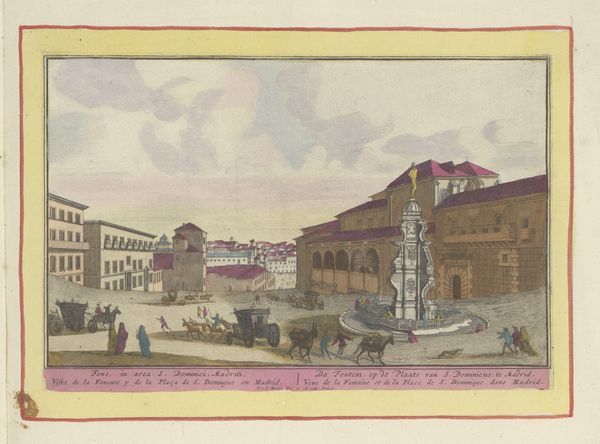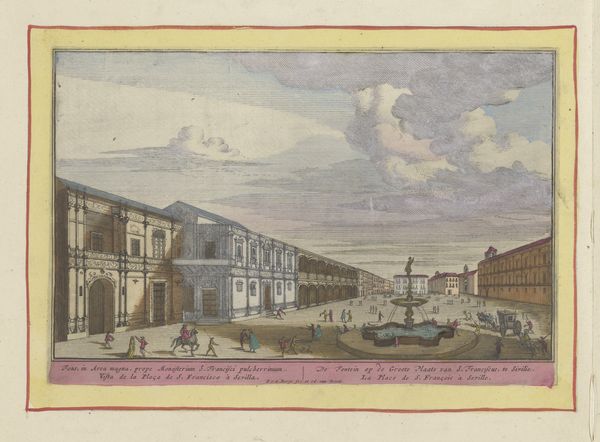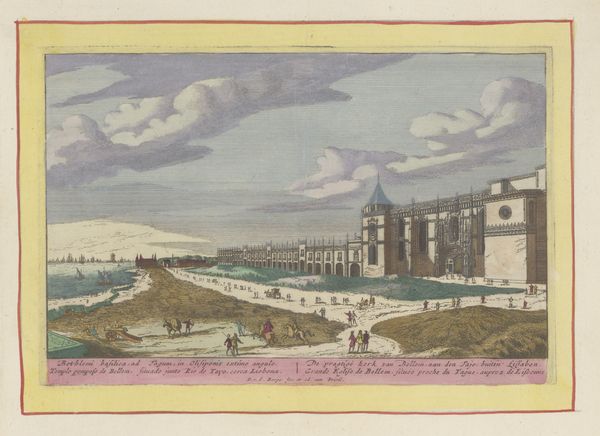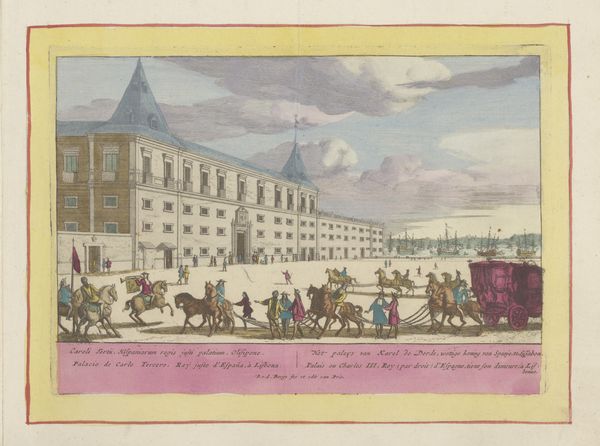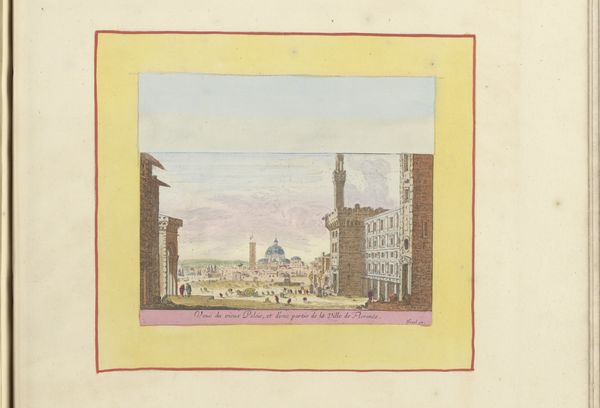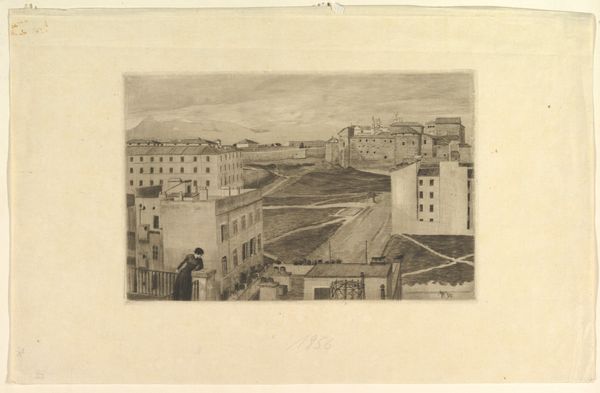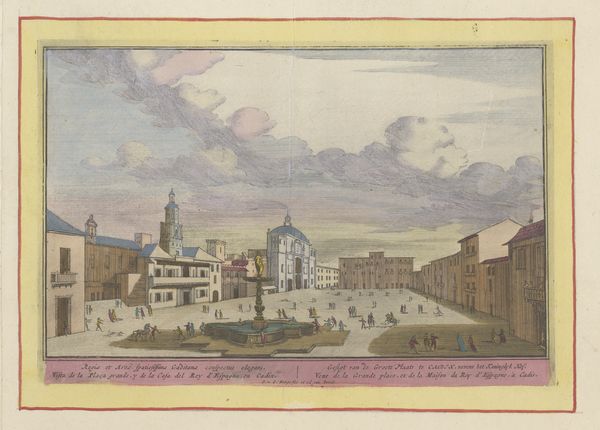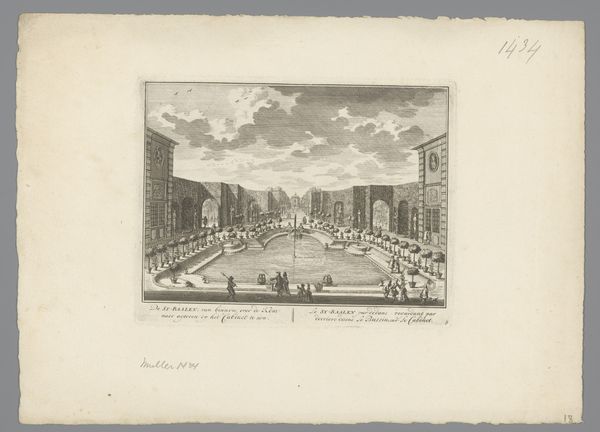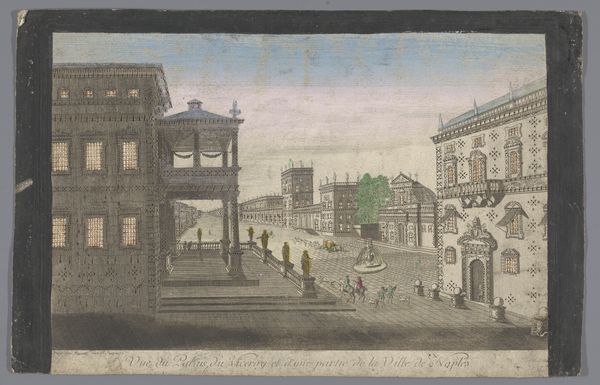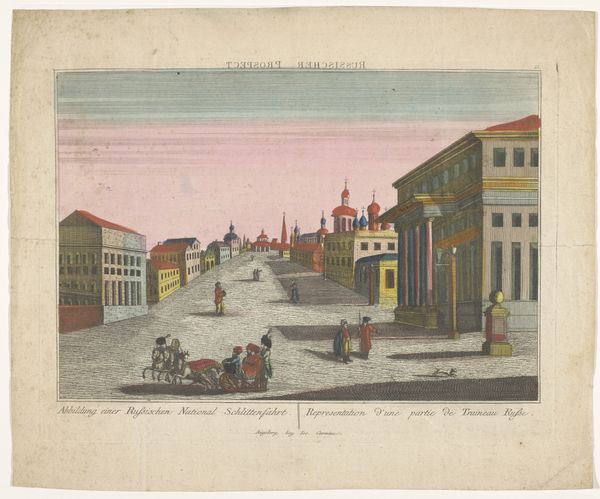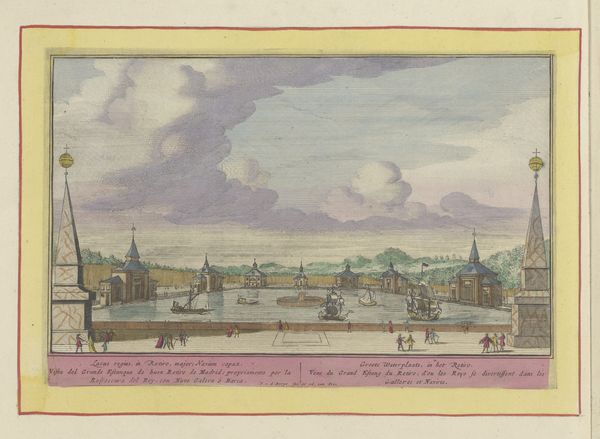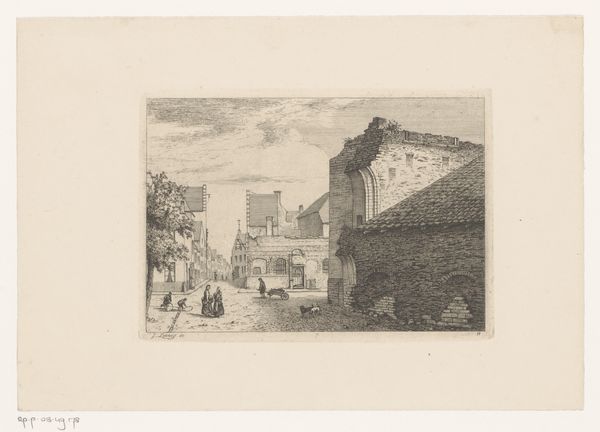
Koninklijke kanselarij of Real Chancillería te Granada 1694 - 1737
0:00
0:00
drawing, print, watercolor, architecture
#
drawing
#
baroque
# print
#
watercolor
#
cityscape
#
watercolour illustration
#
architecture
Dimensions: height 167 mm, width 256 mm
Copyright: Rijks Museum: Open Domain
Curator: Look at this lively scene! What stands out to you initially? Editor: A strange, muted energy. It depicts a busy city square, perhaps, but there's something… clinical about it, even with the colorful washes. It feels distanced, not visceral. Curator: That's an interesting observation. The Rijksmuseum houses this drawing titled "Koninklijke kanselarij of Real Chancillería te Granada," an early 18th-century cityscape, dating sometime between 1694 and 1737 and attributed to Pieter van den Berge. It is a captivating combination of drawing, print, and watercolor. Consider what symbols resonate with you. Editor: The prominence of the Chancillería, almost oppressive in its size and rigid geometry, suggests the reach of power. The figures in the square are dwarfed, subservient to the architecture. But also, the Alhambra in the background is almost like a reminder of the power dynamic between Christianity and Islam in Spain. Curator: Absolutely, the weight of history is palpable. As for iconography, buildings are so much more than just buildings— they’re evidence of belief systems in practice. This image tells a story of power and place. Editor: Right, this piece visually constructs Granada as a space defined by hierarchies. Notice how the layout emphasizes not the everyday life of its inhabitants but the institutional and military powers. It's a spatial manifestation of social control. How might it shape the perception of that power? Curator: Perhaps by imbuing it with a sense of permanence. Stone endures, belief shapes. As we gaze at the illustration now, centuries later, the buildings themselves become icons—visible reminders of shifting cultural beliefs. Editor: Yet, I wonder if Van den Berge's perspective wasn't unintentionally critical. While seeming to celebrate order, the artwork also hints at the potential for such structured power to overwhelm individual experience. It feels relevant in a world wrestling with institutional authority. Curator: I agree that this layered effect grants it staying power and allows each viewer to resonate with a historical image from their point of view. Editor: And perhaps reminds us that even in ostensibly neutral cityscapes, there's always a power dynamic subtly shaping our perspective.
Comments
No comments
Be the first to comment and join the conversation on the ultimate creative platform.
